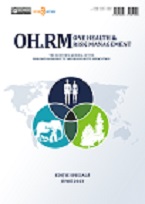Abstract
Introduction. Tick-borne encephalitis (TBE) is a human viral infectious disease involving the central nervous system, a neglected zoonotic disease caused by tick-borne encephalitis virus (TBEV), belonging to the genus Flavivirus, family Flaviviridae. TBE is mainly transmitted by infected ticks (genus Ixodes) or, in rare cases, by unpasteurized dairy products. TBE is becoming a growing public health challenge in Europe and other parts of the world. The number of human cases of TBE in all endemic regions of Europe has increased considerably in the last decades, risk areas have expanded and new outbreaks have been revealed.
Aim. Analysis and presentation of epidemiological data regarding TBEV presence in Europe and the Republic of Moldova.
Material and methods. Data from the annual reports of the National Agency for Public Health (NAPH), Eurosurveillance outbreak report, and ECDC Annual Epidemiological Report for 2020 were used.
Results. European TBE surveillance data report a stable trend in 2012-2016, though the number of TBE cases reported in Europe, increased during 1990-1994, reflecting the start of surveillance in many countries. Over the next 15 years (1995-2009), the trend was stable, with an annual number of TBE cases fluctuating between 2,000 and 4,000 cases. In 2013, several European countries experienced a peak in TBE cases, resulting in the highest number of TBE cases (>3,000) observed in Europe that year. Since 2017, in European countries has been a gradual increase of reported TBE cases, with a maximum of 3734 confirmed cases in 2020. NAPH data on the TBEV testing of non-human samples from 2017 to 2022 in the Republic of Moldova (central and southern part) reveal the following: in 2017 and 2018, the percentage of positive samples represents 24.8% (12/207). For the last four years (2019-2022), no positive results of the examined tick samples have been reported, the number of ticks tested per year being almost 2 times lower. The test method was mostly the immunoenzymatic assay for the detection of antigen from ticks. During 2017-2022 years, seven human samples (serum) were tested and 2 of them were found positive for IgM and IgG antibodies in patients with a history of tick bite.
Conclusions. TBEV is the most prevalent autochthonous flavivirus in Europe and an important travel-associated virus that causes TBE – a zoonotic disease present in many European countries. TBEV outbreaks are complex and dynamic systems that require specific environmental and climatic characteristics suitable for the life cycle of TBEV vectors and reservoirs, which allow amplification and spread of the virus. If certain environmental factors are altered, stable TBEV outbreaks may disappear, though necessary conditions are met, new TBEV outbreaks may appear. Application and implementation of sensitive and efficient detection techniques will contribute to the improvement of laboratory diagnosis and TBEV national surveillance.
|
 Views: 124|
|
Views: 124|
|
This work is licensed under a Creative Commons Attribution 4.0 International License.

